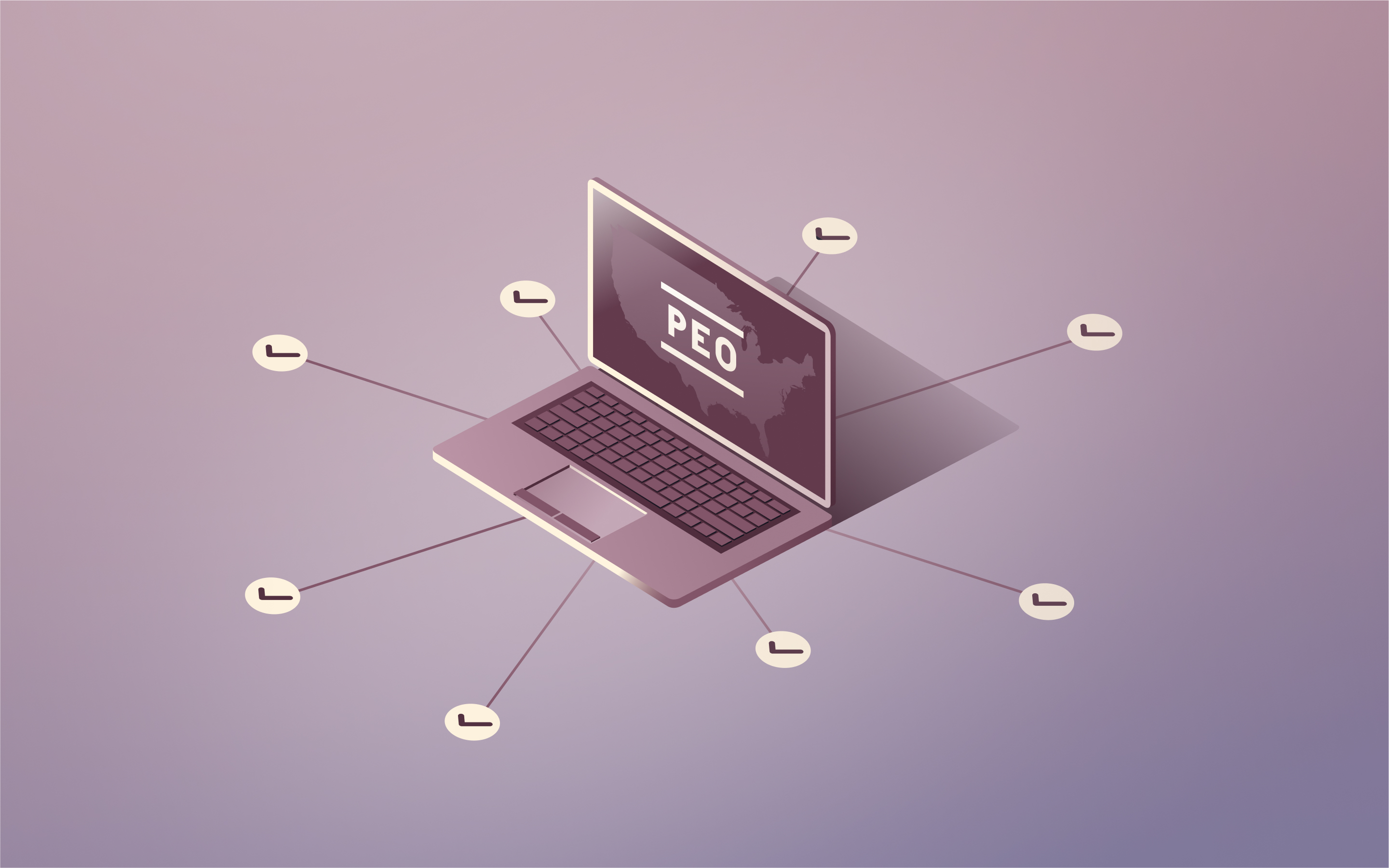What’s the difference between EPO vs. HMO vs. PPO plans?
Health care can be a major expense for any business—whether you’re a startup or a growing organization—in fact, it’s often the second highest cost for businesses after payroll. When your employees turn to you for guidance on health insurance plans, the stakes are high: You want a well-structured health plan that strikes a balance between affordability and comprehensive coverage. But with so many plan types to choose from—like EPOs, HMOs, and PPOs—figuring out which option fits your needs—and your team’s—can be confusing. That’s why we’re here to help. By the end of this article, you’ll have a clear understanding of the differences between these managed care models, so you can choose the best route for your business.
More importantly, picking the right health plan for your organization isn’t only about the name or acronym—it’s about how much your employees pay in premiums, deductibles, and out-of-pocket expenses, as well as which providers and hospitals they can access. Below, we’ll dive into exclusive provider organizations (EPOs), health maintenance organizations (HMOs), and preferred provider organizations (PPOs) to help you make an informed decision.
What is an EPO?
An EPO (exclusive provider organization) is a plan type where plan members use network providers pre-approved by the insurance company. One reason many businesses consider an EPO plan is that it generally offers a broader provider network than traditional HMO plans, but with fewer choices than PPO plans. EPO plans can be an appealing middle ground if you want lower premiums than PPO plans but still need some flexibility.
Here are some important things to know about EPO plans:
- EPO plans generally do not require referrals from a primary care physician (PCP) to see specialists.
- You usually can’t get coverage out-of-network except for emergency care or emergencies.
- EPO plans often have lower deductibles than PPO plans but higher deductibles than HMO plans, depending on the insurance company.
This means your employees can choose doctors and hospitals from an exclusive list of providers, but that list is still often larger than what HMOs offer. For many organizations, EPO plans balance cost and choice, though they are less flexible than PPO plans when it comes to out-of-network coverage.
What is an HMO?
An HMO (health maintenance organization) requires employees to see network providers within a more limited local provider network. The key difference between an HMO plan and other plan types is that an HMO often demands a primary care doctor—also known as a primary care physician—who coordinates most medical services.
Some other key things to know about HMO plans:
- HMOs require referrals from your PCP to see most specialists.
- Typically, there’s no out-of-network coverage unless it’s an emergency.
- Many businesses like HMOs for their lower premiums, lower deductibles, and predictable out-of-pocket costs.
On an HMO, employees must stay within the provider network, which might be smaller than that of an EPO. Despite the limited network, an HMO can simplify how plan members coordinate medical care through a single PCP. Overall, it’s a managed care structure where your primary care physician acts as the main gatekeeper.
What is a PPO?
A PPO (preferred provider organization) plan offers a wider provider network than HMOs or many EPO plans. PPO plans typically allow employees to see specialists without a referral, and they can also visit out-of-network doctors and hospitals at a higher cost share.
Here are some of the main things employers should know about PPO plans:
- PPO plans typically have higher premiums and deductibles than HMO plans or EPO plans.
- PPO plans let employees pay for out-of-network medical services, but they’ll likely face higher coinsurance or copays.
- Referrals are not required to see specialists, which offers more freedom of choice.
For a business wanting broad coverage and flexibility, a preferred provider organization is often the go-to. PPO plans often come with higher out-of-pocket costs for employees and may require larger employer contributions
What are the differences between HMO, EPO, and PPO health plans?
When providers, costs, and referral requirements vary so widely across plan types, it’s critical to pinpoint the best match for your business needs. To quickly break down some of the main differences:
- HMO plans are typically lower in cost but come with a narrower provider network and the requirement for referrals.
- EPO plans usually land in the middle, allowing some freedom (especially for specialists) without the need for a referral, as long as employees stick to the exclusive in-network doctors.
- PPO plans—part of preferred provider organizations—offer the broadest coverage and the ability to visit out-of-network physicians and hospitals, but premiums and out-of-pocket expenses often go up.
For employers putting together a benefits package, the biggest question is how much they want to pay in premiums and how they want to structure coverage. For employees, the top concerns often revolve around pocket costs (like deductibles), coinsurance, and how easy it is to see a specialist without a referral. Another factor is whether employees want the simplicity of having a designated primary care doctor who coordinates all care (HMO model), the freedom to see any physician or specialist (PPO model), or a balanced middle path (EPO).
Below is a quick reference table that highlights more of the major differences between these plan types:
HMO (Health Maintenance Organization)
PPO (Preferred Provider Organization)
EPO (Exclusive Provider Organization)
Primary Care Physician (PCP)
Required. Each plan member selects a primary care doctor who coordinates care and issues referrals for specialists.
Not required. PPO plans don’t demand a PCP; employees can self-refer to specialists or other providers.
Usually not required. EPO plans typically let employees see specialists without referrals, but they may encourage having a PCP for basic health care services.
Out-of-Network Coverage
Limited to emergency care. Most HMO plans do not pay for out-of-network providers.
Yes. PPO plans allow out-of-network coverage, though employees will pay more out-of-pocket.
Very limited. EPO plans seldom cover care outside of the exclusive network except for emergency care.
Referrals to Specialists
Referrals are required from your primary care provider (PCP).
No referrals needed. Employees can schedule with specialists directly.
No referrals needed in most cases, though EPOs do require you to stay within the provider network for coverage (except in emergencies).
Cost of Premiums
Tends to be lower than PPO or EPO. HMO plans often have lower deductibles too.
Higher premiums and deductibles, but the greatest provider flexibility.
Moderate. EPO plans typically fall between HMO and PPO plans in cost, but can be closer to PPO if the network is broad.
Provider Network Size
Smaller local network. You must see in-network doctors and hospitals.
Large network. PPO offers nationwide providers, with partial coverage even out-of-network.
Medium to large network, but exclusive to contracted providers. No out-of-network coverage except in emergency care situations.
Managed Care Model
Comprehensive managed care, with PCP gatekeeping to control costs.
Less strict managed care. Employees self-direct.
Moderate managed care: no PCP requirement, but employees must stick to exclusive in-network providers for full coverage.
HMO vs. PPO vs. EPO: Benefits and drawbacks
Every health insurance plan has advantages and disadvantages. Let’s break down some common pros and cons of each.
What are the benefits of an HMO?
1. Streamlined care: A single primary care physician (PCP) coordinates all medical services.
2. Lower costs: HMO plans often feature lower premiums and deductibles, plus predictable copays for in-network providers.
3. Simplified claims process: Fewer out-of-network claims often mean less administrative work.
What are the disadvantages of an HMO?
1. Limited coverage: HMO coverage generally doesn’t apply outside the provider network unless it’s an emergency.
2. Wait times: Getting a referral from your primary care doctor or PCP might delay specialist appointments.
What are the benefits of an EPO?
1. Lower premiums: EPO plans can cost less than PPO plans while potentially offering broader coverage options than HMOs.
2. Specialist access: No referrals needed to see specialists within the EPO’s exclusive network.
3. No referrals needed: As long as EPO plans allow direct scheduling, employees can see physicians quickly.
What are the disadvantages of an EPO?
1. Emergency exceptions only: Little to no out-of-network coverage beyond true emergency care.
2. Little flexibility: Although typically broader than HMOs, EPO plans still restrict providers to those under contract with the exclusive provider organization.
What are the benefits of a PPO?
1. Nationwide access: Large provider networks across many states, plus some out-of-network coverage.
2. No PCP gatekeeping: No referral needed to see specialists.
3. Freedom of choice: PPO plans offer broad coverage, letting employees pay extra for out-of-network physicians and hospitals if they choose.
What are the disadvantages of a PPO?
1. Higher complexity: Managing out-of-network claims, deductibles, coinsurance, and referrals (though not typically required, some specialists do want documentation) can be more complicated.
2. Higher deductibles: PPO plans usually come with higher overall costs, including premiums and out-of-pocket expenses.
Which is the right health plan for your business? EPO vs. HMO vs. PPO
When deciding among plan types like EPOs, HMOs, and PPOs, consider the size of your organization, your budget for employee health care, and the nature of your workforce’s medical services needs.
Smaller companies with tight budgets might lean toward HMO plans because of their lower premiums and simpler managed care model. Medium-sized or growing organizations that need more choices for providers and specialists—but still want moderate costs—could find EPO plans the right fit. Large corporations or employers in industries requiring frequent travel or specialized medical care often pick PPO plans for nationwide coverage and maximum flexibility.
Ultimately, each of these plan types can work well if your benefits administration is efficient. Whether you offer HMO and PPO plans, an exclusive EPO path, or even POS (point of service) plans alongside an HSA, what matters most is tailoring your health benefits to your employees’ needs. Make sure you also communicate clearly about costs such as deductibles, premiums, and how much the employer will pay on behalf of plan members.
Easily manage employee benefits with Rippling
Rippling's Benefits Administration software consolidates all your benefits into one system, automating enrollment, deductions, and administration.
And with Rippling PEO, you can access big-company benefits, including Fortune 500-caliber medical, dental, and vision benefits, pay-as-you-go workers’ compensation plans, EPLI coverage, HSA, FSA, and more—likely for less than you’re paying now. Your employees will also get free access to concierge, and on-demand benefit navigation services via Rightway to help them pick benefit plans, schedule appointments, understand bills, find in-network providers, and more.
Rippling PEO is the first to sync HR, IT, and finance into one platform, making all your busy work streamlined and straightforward. From 90-second onboarding to remote IT management, Rippling is fast and user-friendly; its modern, easy-to-use software is a big step up from most PEOs that run on software built in the 1980s (yes, really).
With Rippling, you get:
- HR, IT, and Finance in one platform
- Powerful and customizable reporting on any employee data
- Remote team management features, including state and local tax registration, digital onboarding, and app and device management
- Access to top-notch benefits plans with below-average, predictable renewal rates
- Automatic flagging for potential federal, state, and local compliance infractions, along with recommended action plans
- Automated processes, including ACA and COBRA administration, anti-harassment training, and distributing digital labor law posters to your employees
- Access to hundreds of comprehensive HR resources, guides, and templates
EPO vs PPO vs. HMO FAQs
Is EPO better than HMO?
“Better” depends on what you and your employees value. An exclusive provider organization generally has a broader network than an HMO, doesn’t require a referral for specialists, and often has moderate premiums—yet provides less out-of-network coverage than PPO plans. Meanwhile, HMOs can have even lower premiums but also more restrictions.
Is EPO or PPO better?
EPO plans cost less in premiums than PPO plans, but PPO plans typically offer out-of-network coverage—a big plus for employees who want the freedom to see any physician. If your workforce values the widest possible provider network, a PPO might be worth the extra cost. If they can manage within a narrower exclusive set of providers and want lower costs, an EPO might be better.
Are EPO plans worth it?
EPO plans can absolutely be worth it if you want some of the freedom of a preferred provider organization but with lower premiums. They’re often a good fit for employees who are comfortable sticking to in-network doctors and hospitals and don’t mind limited out-of-network coverage except for emergency care.
What are EPO, PPO, and HMO dental plans?
Dental coverage often follows a similar structure to health plans. HMO and PPO dental plans mimic the approach of health HMO plans and PPO plans—HMOs limit you to contracted dental providers, while PPOs let you go out-of-network at a higher cost. EPO plan for dental coverage follows the same exclusive provider organization model, allowing you to see any in-network dentist without referrals, but offering no coverage out-of-network except in an emergency.
This blog is based on information available to Rippling as of January 30, 2025.
Disclaimer: Rippling and its affiliates do not provide tax, accounting, or legal advice. This material has been prepared for informational purposes only, and is not intended to provide or be relied on for tax, accounting, or legal advice. You should consult your own tax, accounting, and legal advisors before engaging in any related activities or transactions.











